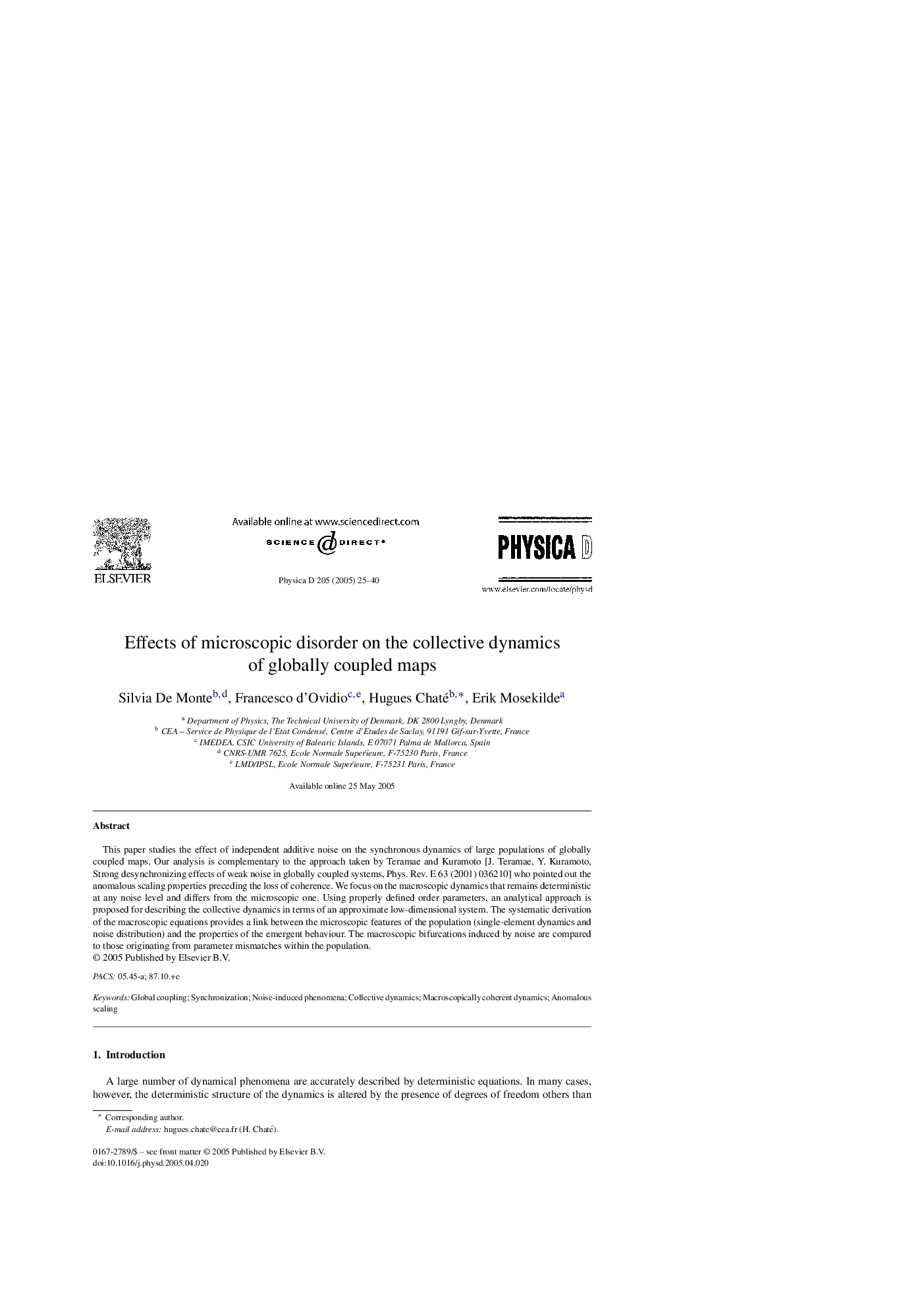| Article ID | Journal | Published Year | Pages | File Type |
|---|---|---|---|---|
| 9877633 | Physica D: Nonlinear Phenomena | 2005 | 16 Pages |
Abstract
This paper studies the effect of independent additive noise on the synchronous dynamics of large populations of globally coupled maps. Our analysis is complementary to the approach taken by Teramae and Kuramoto [J. Teramae, Y. Kuramoto, Strong desynchronizing effects of weak noise in globally coupled systems, Phys. Rev. E 63 (2001) 036210] who pointed out the anomalous scaling properties preceding the loss of coherence. We focus on the macroscopic dynamics that remains deterministic at any noise level and differs from the microscopic one. Using properly defined order parameters, an analytical approach is proposed for describing the collective dynamics in terms of an approximate low-dimensional system. The systematic derivation of the macroscopic equations provides a link between the microscopic features of the population (single-element dynamics and noise distribution) and the properties of the emergent behaviour. The macroscopic bifurcations induced by noise are compared to those originating from parameter mismatches within the population.
Keywords
Related Topics
Physical Sciences and Engineering
Mathematics
Applied Mathematics
Authors
Silvia De Monte, Francesco d'Ovidio, Hugues Chaté, Erik Mosekilde,
